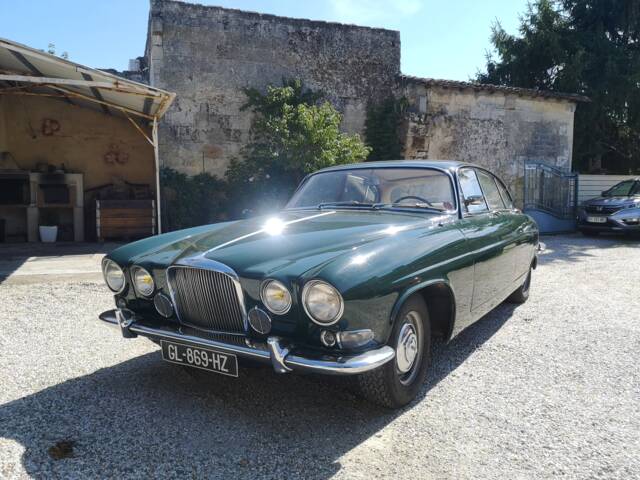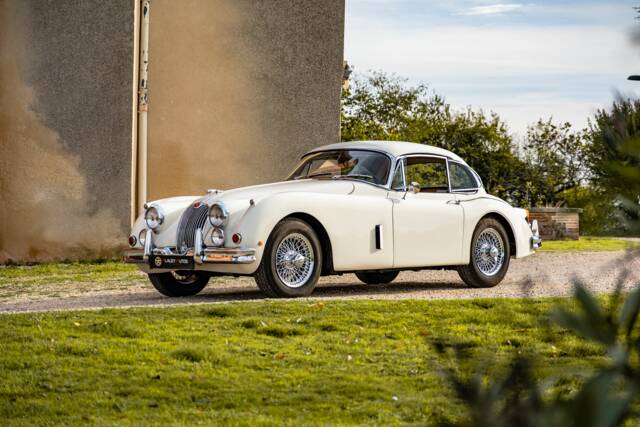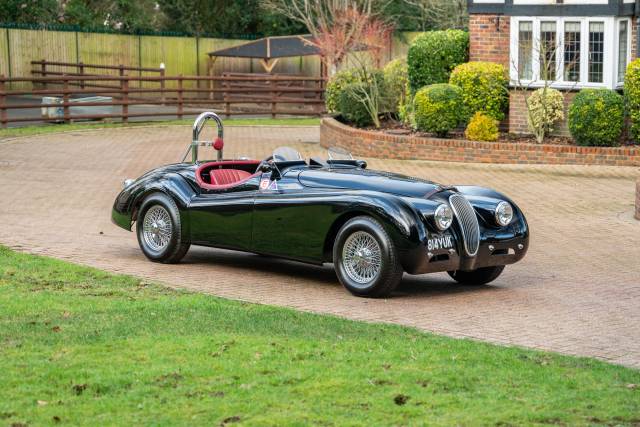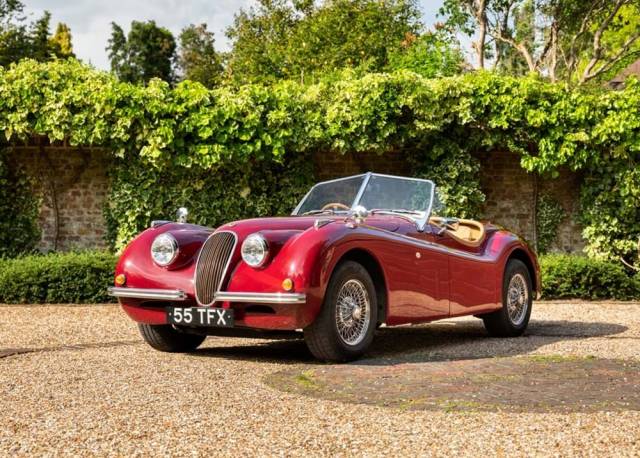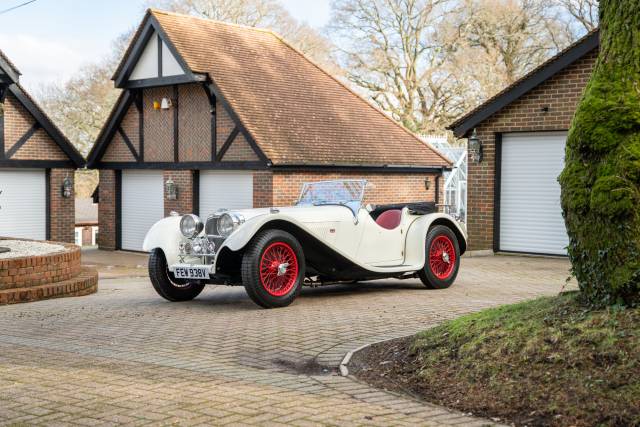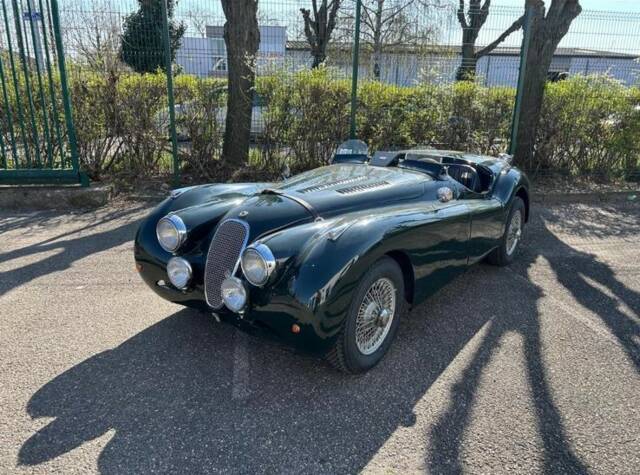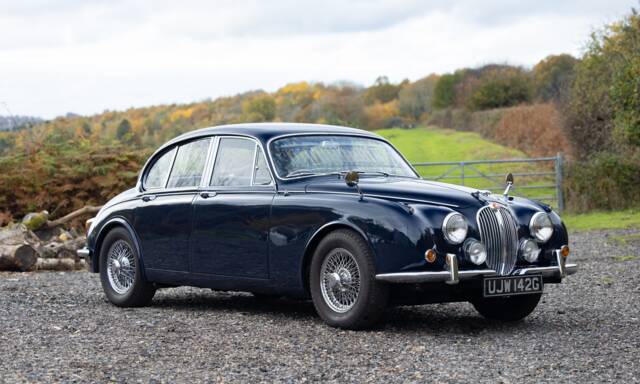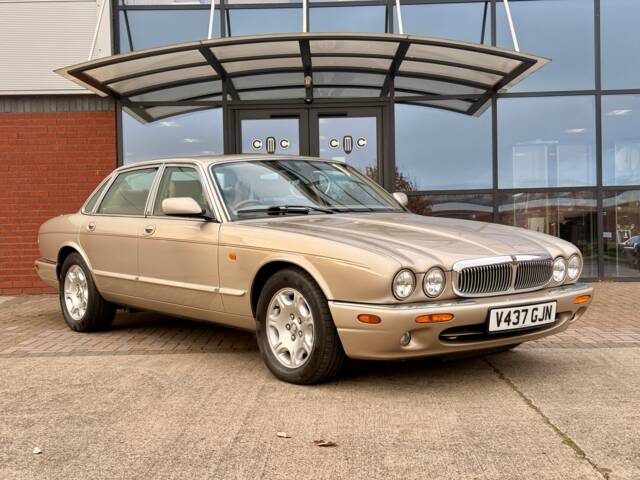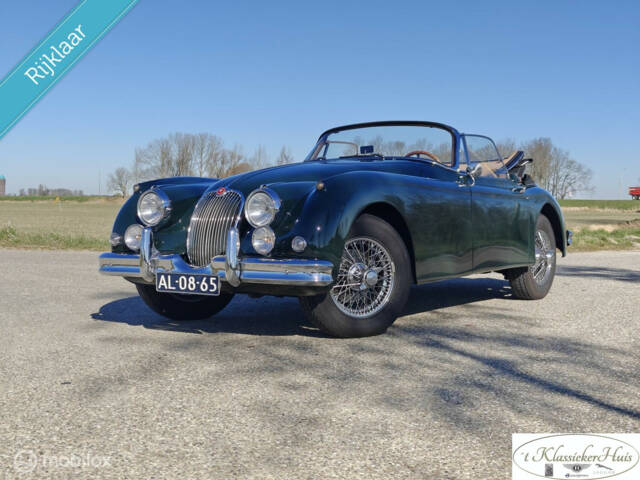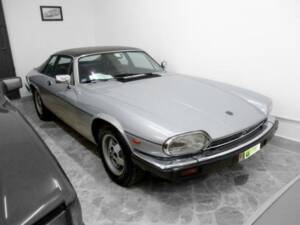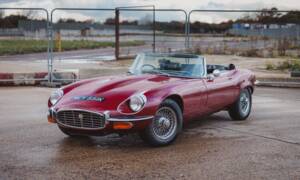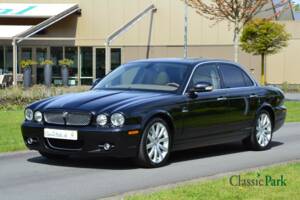History of Jaguar
Founded in 1922 by William Lyons and William Walmsley as the Swallow Sidecar Company, Jaguar started out manufacturing motorcycle sidecars and soon moved into building bodies for the Austin Seven. By 1931 in Coventry, their own designs emerged with the SS1 and SS2. In 1935, the SS90 marked the first use of the Jaguar name, highlighted by low prices and considerable motorsport success. The SS100 followed, helping Jaguar secure a solid position within the British and international car market. The brand rebuilt heroically after a devastating fire in 1956, going on to win acclaim in both luxury and motorsport sectors, especially with models like the E-Type and Mark II. Jaguar’s logo—the leaping cat—has symbolised power and dynamism since 1935 and remains one of the most recognised emblems in automotive history.
Model Range and Evolution
Jaguar’s line-up evolved from the pre-war SS models to significant post-war models such as the XK120, XK140, and XK150, each improving on chassis, comfort, and performance. The E-Type (1961–1974) replaced the XK series with its monocoque construction, independent suspension, and all-round disc brakes, becoming synonymous with performance sports cars. Saloon models such as the Mark II, S-Type, and the various generations of XJ and XJS further broadened the portfolio, offering everything from racing prowess to supreme comfort. After integrating Daimler (1960), Jaguar expanded production and luxury offerings. Even later, models like the XJ220 supercar and XK8 kept the tradition alive into the modern era.
Highlights and Statistics
Jaguar classic models effortlessly stand out for their fusion of sportiness and sophistication. From the competition-proven C-Type and D-Type, multiple Le Mans winners, to the fastest road car of its day, the XK120, every series has technical distinctions: DOHC engines, disc brakes, elite interiors. The E-Type remains a benchmark for postwar design and engineering, especially the Series I with its covered headlamps and monocoque body. The XK ‘S’ specifications delivered higher performance—up to 265 bhp. Interiors typically feature hand-finished leather, polished wood, and distinctive British ergonomics. Saloons like the Mark II and XJ series were as much at home in motorsport as in the hands of discerning British drivers.
Technical Data
| Model(s) |
Model Series |
Year(s) of Construction |
Body Variants |
Drive Type |
Power (HP) |
Displacement (ccm) |
Cylinders |
Fuel |
| SS 1 |
|
1933-1936 |
Coupe |
Rear |
68 |
2663 |
6 |
Gasoline |
| SS 1 |
|
1933-1937 |
Convertible (Roadster);Convertible (Tourer) |
Rear |
68 |
1608 - 2663 |
4;6 |
Gasoline |
| SS 2 |
|
1934-1936 |
Coupe |
Rear |
38 |
1608 |
4 |
Gasoline |
| SS 100 3.5 Litre |
|
1935-1940 |
Convertible (Roadster) |
Rear |
125 |
3485 |
6 |
Gasoline |
| SS 100 |
|
1935-1940 |
Convertible (Roadster) |
Rear |
102 |
2663 |
6 |
Gasoline |
| SS 1 1/2 Litre |
|
1935-1938 |
Saloon (4-doors) |
Rear |
68 |
1608 |
4 |
Gasoline |
| SS 2½ litre |
|
1935-1938 |
Saloon (4-Türen) |
Rear |
177 |
2663 |
4 |
Gasoline |
| 1.5 Litre |
|
1935-1949 |
Saloon |
Rear |
66 |
1776 |
4 |
Gasoline |
| 1.5 Litre |
|
1935-1938 |
Convertible |
Rear |
66 |
1608 |
4 |
Gasoline |
| Mk IV 2,5 Litre |
|
1935-1948 |
Saloon |
Rear |
102 |
2664 |
6 |
Gasoline |
| Mk IV 2,5 Litre |
|
1935-1948 |
Convertible |
Rear |
102 |
2664 |
6 |
Gasoline |
| SS 100 2.5 Litre |
|
1936-1940 |
Convertible (Roadster) |
Rear |
102 |
2663 |
6 |
Gasoline |
| SS 2 |
|
1936-1937 |
Convertible (Tourer);Convertible (Roadster) |
Rear |
68 |
1608 |
4 |
Gasoline |
| Mk IV 3,5 Litre |
|
1937-1948 |
Coupe |
|
125 |
3485 |
6 |
Gasoline |
| Mk IV 3,5 Litre |
|
1937-1948 |
Saloon |
Rear |
125 |
3485 |
6 |
Gasoline |
| Mk IV 3,5 Litre |
|
1937-1948 |
Convertible |
Rear |
125 |
3485 |
6 |
Gasoline |
| XK 120 OTC (Alloy) |
120 |
1948-1949 |
Convertible (Roadster) |
Rear |
162 |
3442 |
6 |
Gasoline |
| Mk V 2.5 Litre |
|
1948-1951 |
Saloon |
Rear |
102 |
2664 |
6 |
Gasoline |
| Mk V 2.5 Litre |
|
1948-1951 |
Convertible |
Rear |
102 |
2664 |
6 |
Gasoline |
| Mk V 3.5 Litre |
|
1948-1951 |
Saloon |
Rear |
125 |
3485 |
6 |
Gasoline |
| Mk V 3.5 Litre |
|
1948-1951 |
Convertible |
Rear |
125 |
3485 |
6 |
Gasoline |
| XK 120 OTC |
120 |
1949-1954 |
Convertible (Roadster) |
Rear |
162 |
3442 |
6 |
Gasoline |
| Mk VII |
|
1950-1954 |
Saloon |
Rear |
160 |
3442 |
6 |
Gasoline |
| XK 120 FHC |
120 |
1951-1954 |
Coupe |
Rear |
162 |
3442 |
6 |
Gasoline |
| XK 120 SE FHC |
120 |
1951-1954 |
Coupe |
Rear |
182-213 |
3442 |
6 |
Gasoline |
| XK 120 SE OTC |
120 |
1951-1954 |
Convertible (Roadster) |
Rear |
182 |
3442 |
6 |
Gasoline |
| XK 120 C (C-Type) |
C-Type |
1951-1964 |
Convertible (Roadster) |
Rear |
203-260 |
3442 - 4200 |
6 |
Gasoline |
| XK 120 DHC |
120 |
1953-1954 |
Convertible |
Rear |
162-193 |
3442 |
6 |
Gasoline |
| XK 120 SE DHC |
120 |
1953-1954 |
Convertible |
Rear |
182 |
3442 |
6 |
Gasoline |
| XK 140 OTC |
140 |
1954-1957 |
Convertible (Roadster) |
Rear |
193 |
3442 |
6 |
Gasoline |
| XK 140 DHC |
140 |
1954-1957 |
Convertible |
Rear |
193 |
3442 |
6 |
Gasoline |
| XK 140 FHC |
140 |
1954-1957 |
Coupe |
Rear |
193 |
3442 |
6 |
Gasoline |
| XK 140 SE OTC |
140 |
1954-1957 |
Convertible (Roadster) |
Rear |
193 |
3442 |
6 |
Gasoline |
| XK 140 SE DHC |
140 |
1954-1957 |
Convertible |
Rear |
213 |
3442 |
6 |
Gasoline |
| XK 140 SE FHC |
140 |
1954-1957 |
Coupe |
Rear |
213 |
3442 |
6 |
Gasoline |
| XK 140 SE-C OTC |
140 |
1954-1957 |
Convertible (Roadster) |
Rear |
213 |
3442 |
6 |
Gasoline |
| XK 140 SE-C FHC |
140 |
1954-1957 |
Coupe |
Rear |
213 |
3442 |
6 |
Gasoline |
| Mk VII M |
|
1954-1957 |
Saloon |
Rear |
190 |
3442 |
6 |
Gasoline |
| D-Type |
|
1954-1975 |
Convertible (Roadster) |
Rear |
177-253 |
3442 |
6 |
Gasoline |
| 2.4 Litre |
|
1955-1959 |
Saloon |
Rear |
112 |
2483 |
6 |
Gasoline |
| Mk VIII |
|
1956-1959 |
Saloon |
Rear |
210 |
3442 |
6 |
Gasoline |
| XK-SS |
|
1956-1957 |
Convertible (Roadster) |
|
236 |
3442 |
6 |
|
| XK 150 OTC |
150 |
1957-1961 |
Convertible (Roadster) |
Rear |
193 |
3442 |
6 |
Gasoline |
| XK 150 DHC |
150 |
1957-1961 |
Convertible |
Rear |
193 |
3442 |
6 |
Gasoline |
| XK 150 SE DHC |
150 |
1957-1958 |
Convertible |
Rear |
213 |
3442 |
6 |
Gasoline |
| XK 150 FHC |
150 |
1957-1961 |
Coupe |
Rear |
193 |
3442 |
6 |
Gasoline |
| XK 150 SE FHC |
150 |
1957-1961 |
Coupe |
Rear |
213 |
3442 |
6 |
Gasoline |
| 3.4 Litre |
|
1957-1959 |
Saloon |
Rear |
210 |
3442 |
6 |
Gasoline |
| Vicarage Special |
|
1958-1959 |
Convertible (Roadster) |
|
215-275 |
3800 |
6 |
Gasoline |
| XK 150 SE OTC |
150 |
1958-1961 |
Convertible (Roadster) |
Rear |
213 |
3442 |
6 |
Gasoline |
| XK 150 3.4 S FHC |
150 |
1958-1961 |
Coupe |
Rear |
254 |
3442 |
6 |
Gasoline |
| XK 150 3.4 S OTC |
150 |
1958-1961 |
Convertible (Roadster) |
Rear |
254 |
3442 |
6 |
Gasoline |
| XK 150 3.4 S DHC |
150 |
1958-1961 |
Convertible |
Rear |
254 |
3442 |
6 |
Gasoline |
| XK 150 Special |
150 |
1958 |
Convertible (Roadster) |
Rear |
161 |
3800 |
6 |
Gasoline |
| Mk IX |
|
1958-1961 |
Saloon |
Rear |
220 |
3781 |
6 |
Gasoline |
| XK 150 3.8 S FHC |
150 |
1959-1961 |
Coupe |
Rear |
269 |
3781 |
6 |
Gasoline |
| XK 150 3.8 SE FHC |
150 |
1959-1961 |
Coupe |
Rear |
223 |
3781 |
6 |
Gasoline |
| XK 150 3.8 SE DHC |
150 |
1959-1961 |
Convertible |
Front |
223 |
3781 |
6 |
Gasoline |
| XK 150 3.8 SE OTC |
150 |
1959-1961 |
Convertible (Roadster) |
Rear |
223 |
3781 |
6 |
Gasoline |
| XK 150 3.8 S OTS |
150 |
1959-1961 |
Convertible (Roadster) |
Rear |
269 |
3781 |
6 |
Gasoline |
| XK 150 3.8 S DHC |
150 |
1959-1961 |
Convertible |
Rear |
269 |
3781 |
6 |
Gasoline |
| Mk II 2.4 |
|
1959-1967 |
Saloon |
Rear |
121 |
2483 |
6 |
Gasoline |
| Mk II 3.4 |
|
1959-1967 |
Saloon (4-doors) |
Rear |
210 |
3442 |
6 |
Gasoline |
| Mk II 3.8 |
|
1959-1967 |
Saloon (4-doors) |
Rear |
224 |
3781 |
6 |
Gasoline |
| Mk II 3.8 |
|
1961 |
Pick-up |
Rear |
265 |
3754 |
6 |
Gasoline |
| E-Type 3.8 |
Serie I |
1961-1964 |
Coupe |
Rear |
269 |
3781 |
6 |
Gasoline |
| E-Type 3.8 |
Serie I |
1961-1964 |
Convertible (Roadster) |
Rear |
269 |
3781 |
6 |
Gasoline |
| E-Type "Lightweight" |
Serie I |
1961-1964 |
Coupe |
Rear |
349 |
3781 |
6 |
Gasoline |
| E-Type "Lightweight" |
Serie I |
1961-1964 |
Convertible (Roadster) |
Rear |
349 |
3781 |
6 |
Gasoline |
| E-Type 3.8 Flat Floor |
Serie I |
1961-1962 |
Coupe |
Rear |
269 |
3781 |
6 |
Gasoline |
| E-Type 3.8 Flat Floor |
Serie I |
1961-1962 |
Convertible |
Rear |
269 |
3781 |
6 |
Gasoline |
| Mk X 3.8 |
|
1961-1964 |
Saloon |
Rear |
220 |
3781 |
6 |
Gasoline |
| E-Type "Low Drag Coupé" |
Serie I |
1962 |
Coupe |
Rear |
344 |
3781 |
6 |
Gasoline |
| S-Type 3.4 |
|
1963-1968 |
Saloon (4-doors) |
Rear |
210 |
3442 |
6 |
Gasoline |
| S-Type 3.8 |
|
1963-1968 |
Saloon |
Rear |
220 |
3781 |
6 |
Gasoline |
| E-Type "Semi-Lightweight" |
Serie I |
1963 |
Convertible (Roadster) |
Rear |
340 |
4700 |
6 |
Gasoline |
| E-Type 4.2 |
Serie I |
1964-1967 |
Coupe |
Rear |
207-269 |
4235 |
6 |
Gasoline |
| E-Type 4.2 |
Serie I |
1964-1967 |
Convertible (Roadster) |
Rear |
269 |
4235 |
6 |
Gasoline |
| Mk X 4.2 |
|
1964-1966 |
Saloon |
Rear |
265 |
4235 |
6 |
Gasoline |
| E-Type (2+2) |
Serie I |
1966-1968 |
Coupe |
Rear |
269 |
4235 |
6 |
Gasoline |
| 420 |
|
1966-1968 |
Saloon |
Rear |
245 |
4235 |
6 |
Gasoline |
| 420 G |
|
1966-1970 |
Saloon |
Rear |
265 |
4235 |
6 |
Gasoline |
| FT |
|
1966 |
Coupe |
Rear |
245 |
4235 |
6 |
Gasoline |
| 340 |
|
1967-1968 |
Saloon (4-doors) |
Rear |
210 |
3442 |
6 |
Gasoline |
| 240 |
|
1967-1969 |
Saloon (4-doors) |
Rear |
133 |
2483 |
6 |
Gasoline |
| E-Type |
Serie I |
1967-1968 |
Coupe |
Rear |
269 |
4235 |
6 |
Gasoline |
| E-Type |
Serie I |
1967-1968 |
Convertible (Roadster) |
Rear |
259-269 |
4235 |
6 |
Gasoline |
| XK-E |
Serie I |
1967-1968 |
Convertible (Roadster) |
Rear |
249 |
4235 |
6 |
Gasoline |
| 240 |
|
1968 |
Convertible |
Rear |
133 |
2483 |
6 |
Gasoline |
| E-Type 3.8 "Lightweight" |
Serie I |
1968 |
Coupe |
Rear |
265 |
3781 |
6 |
Gasoline |
| E-Type (2+2) |
Serie II |
1968-1970 |
Coupe |
Rear |
265 |
4235 |
6 |
Gasoline |
| E-Type |
Serie II |
1968-1971 |
Coupe |
Rear |
171-265 |
4235 |
6 |
Gasoline |
| E-Type |
Serie II |
1968-1970 |
Convertible (Roadster) |
Rear |
171-265 |
4235 |
6 |
Gasoline |
| XK-E (2+2) |
Serie II |
1968-1971 |
Coupe |
Rear |
249 |
4235 |
6 |
Gasoline |
| XK-E |
Serie II |
1968-1971 |
Coupe |
Rear |
249 |
4235 |
6 |
Gasoline |
| XK-E |
Serie II |
1968-1971 |
Convertible (Roadster) |
Rear |
249 |
4235 |
6 |
Gasoline |
| XJ 6 2.8 |
Series I |
1968-1973 |
Saloon |
Rear |
142 |
2791 |
6 |
Gasoline |
| XJ 6 4.2 |
Series I |
1968-1973 |
Saloon (4-doors) |
Rear |
152-186 |
4235 |
6 |
Gasoline |
| E-Type "Semi-Lightweight" |
Serie II |
1969 |
Coupe |
Rear |
269 |
3781 |
6 |
Gasoline |
| E-Type V12 (2+2) |
Serie III |
1971-1975 |
Coupe |
Rear |
276 |
5343 |
12 |
Gasoline |
| E-Type V12 |
Serie III |
1971-1975 |
Convertible (Roadster) |
Rear |
268-318 |
5343 |
12 |
Gasoline |
| XJ 12 |
Series I |
1972-1973 |
Saloon (4-doors) |
Rear |
253 |
5343 |
12 |
Gasoline |
| XJ 12 L |
Series I |
1972-1973 |
Saloon (4-doors) |
Rear |
253 |
5343 |
12 |
Gasoline |
| XK-E |
Serie III |
1973-1974 |
Convertible (Roadster) |
Rear |
268 |
5343 |
12 |
Gasoline |
| XJ 6 4.2 |
Series II |
1973-1974 |
Saloon (4-doors) |
Rear |
168 |
4235 |
6 |
Gasoline |
| XJ 6 L 4.2 |
Series II |
1973-1979 |
Saloon (4-doors) |
Rear |
168 |
4235 |
6 |
Gasoline |
| XJ 6 L 4.2 |
Series II |
1973-1979 |
Convertible |
Rear |
168 |
4235 |
6 |
Gasoline |
| XJ 12 L |
Series II |
1973-1979 |
Saloon (4-doors) |
Rear |
285 |
5343 |
12 |
Gasoline |
| XJ 6 C 4.2 |
Series II |
1973-1979 |
Coupe |
Rear |
172 |
4235 |
6 |
Gasoline |
| XJ12c |
Series II |
1974-1978 |
Coupe (Hardtop) |
Rear |
248-254 |
5343 |
12 |
Gasoline |
| XJ12c Sedan |
Series II |
1974-1975 |
Coupe (Hardtop) |
Rear |
244-248 |
5343 |
12 |
Gasoline |
| XJ-S |
Series I |
1975-1981 |
Coupe |
Rear |
287 |
5343 |
12 |
Gasoline |
| XJ 6 3.4 |
Series II |
1975-1979 |
Saloon (4-doors) |
Rear |
161 |
3442 |
6 |
Gasoline |
| XJ 5.3 C |
Series II |
1975-1978 |
Coupe (Hardtop) |
Rear |
289 |
5343 |
12 |
Gasoline |
| T-Type Beacham |
Serie II |
1977 |
Convertible (Roadster) |
|
370 |
4235 |
8 |
Gasoline |
| XJ 4.2 |
Series II |
1977-1978 |
Saloon (4-doors) |
Rear |
170 |
4235 |
6 |
Gasoline |
| XJ-S |
Series I |
1979 |
Convertible |
Rear |
287 |
5343 |
12 |
Gasoline |
| XJ 6 4.2 |
Series III |
1979-1986 |
Saloon (4-doors) |
Rear |
205 |
4235 |
6 |
Gasoline |
| XJ 6 3.4 |
Series III |
1979-1986 |
Saloon (4-doors) |
Rear |
161 |
3442 |
6 |
Gasoline |
| XJ 12 |
Series III |
1979-1992 |
Saloon (4-doors) |
Rear |
287 |
5343 |
12 |
Gasoline |
| XJ-S H.E. |
Series II |
1981-1985 |
Coupe |
|
295-299 |
5343 |
12 |
Gasoline |
| XJ-S H.E. |
Series II |
1981-1991 |
Convertible |
Rear |
264-295 |
5343 |
12 |
Gasoline |
| XJ S H.E. |
Series II |
1981-1984 |
Coupe |
Rear |
266 |
5343 |
12 |
Gasoline |
| XJ 6 4.2 |
Series III |
1982 |
Convertible (Saloon) |
Rear |
205 |
4235 |
6 |
Gasoline |
| XJ-SC 3.6 |
Series II |
1983-1988 |
Convertible (Targa) |
Rear |
228 |
3590 |
6 |
Gasoline |
| XJ-S 3.6 |
Series II |
1983-1991 |
Coupe |
Rear |
203-228 |
3590 |
6 |
Gasoline |
| XJ-SC H.E. |
Series II |
1983-1988 |
Convertible (Targa) |
|
295 |
5343 |
12 |
|
| Sovereign H.E. V12 |
Series III |
1983-1985 |
Saloon (4-doors) |
Rear |
295 |
5343 |
12 |
Gasoline |
| XJ-SC 5.3 |
Series II |
1985-1988 |
Convertible (Targa);Convertible |
Rear |
265-295 |
5343 |
12 |
Gasoline |
| XJS 5.3 V12 |
Series II |
1985-1991 |
Convertible |
Rear |
281-295 |
5345 |
12 |
Gasoline |
| XJ-SC V12 |
Series II |
1985-1986 |
Convertible (Targa) |
Rear |
269 |
5343 |
12 |
Gasoline |
| XJ-S Series 1 |
Series II |
1985-1990 |
Coupe |
Front |
295 |
5343 |
12 |
Gasoline |
| XJS V12 Lister |
Series II |
1986-1988 |
Coupe |
Rear |
608 |
7000 |
12 |
Gasoline |
| XJ 6 4.0 |
XJ40 |
1986-1994 |
Saloon (4-doors) |
Rear |
222 |
3980 |
6 |
Gasoline |
| XJ 6 2.9 |
XJ40 |
1986-1989 |
Saloon (4-doors) |
Rear |
167 |
2919 |
6 |
Gasoline |
| Sovereign 2.9 |
XJ40 |
1986-1989 |
Saloon (4-doors) |
Rear |
167 |
2919 |
6 |
Gasoline |
| Sovereign 3.6 |
XJ40 |
1986-1989 |
Saloon (4-doors) |
Rear |
184-224 |
3590 |
6 |
Gasoline |
| XJ-S Convertible |
Series II |
1988-1991 |
Convertible |
|
295 |
5343 |
12 |
|
| XJR-S V12 Le Mans |
Series II |
1988-1989 |
Coupe |
Rear |
295 |
5343 |
12 |
Gasoline |
| XJS V12 Lister |
Series II |
1989 |
Convertible |
Rear |
430 |
6495 |
12 |
Gasoline |
| XJ 40 (XJ-R) |
XJ40 |
1989-1993 |
Saloon (4-doors) |
Rear |
251 |
3992 |
6 |
Gasoline |
| XJRS 6.0 |
Series II |
1990-1991 |
Coupe (Fastback) |
Rear |
309-324 |
5993 |
12 |
Gasoline |
| XJS 6.0 V12 |
Series II |
1990-1993 |
Convertible |
|
309 |
5993 |
12 |
Gasoline |
| XJ 40 4.0 |
XJ40 |
1990-1994 |
Saloon (4-doors) |
Rear |
222 |
3980 |
6 |
Gasoline |
| XJ6 3.2 |
XJ40 |
1990-1992 |
Saloon (4-doors) |
Rear |
203 |
3239 |
6 |
Gasoline |
| XJS 4.0 |
Series III |
1991-1995 |
Coupe |
Rear |
222-233 |
3980 |
6 |
Gasoline |
| XJS 4.0 |
Series III |
1991-1996 |
Convertible |
Rear |
222-233 |
3980 |
6 |
Gasoline |
| XJS 5.3 V12 |
Series III |
1991-1996 |
Coupe |
Rear |
281 |
5345 |
12 |
Gasoline |
| XJS 5.3 V12 |
Series III |
1991-1996 |
Convertible |
Rear |
281 |
5345 |
12 |
Gasoline |
| XJS 4.0 Celebration |
Series III |
1991-1996 |
Coupe |
Rear |
240 |
3980 |
6 |
Gasoline |
| XJS 4.0 Celebration |
Series III |
1991-1996 |
Convertible |
|
240 |
3980 |
6 |
Gasoline |
| XJ 40 3.2 |
XJ40 |
1991-1994 |
Saloon (4-doors) |
Rear |
199 |
3239 |
6 |
Gasoline |
| XJ6 3.2 Sovereign |
X300 |
1992-1997 |
Saloon (4-doors) |
|
211 |
3239 |
6 |
Gasoline |
| XJ12 6.0 |
XJ40 |
1992-1994 |
Saloon (4-doors) |
Rear |
318 |
5993 |
12 |
Gasoline |
| XJ 220 |
|
1992-1994 |
Coupe |
Rear |
549 |
3498 |
6 |
Gasoline |
| XJS 6.0 |
Series III |
1993-1995 |
Coupe |
Rear |
302 |
5993 |
12 |
Gasoline |
| XJS 6.0 |
Series III |
1993-1995 |
Convertible |
Rear |
302 |
5993 |
12 |
Gasoline |
| XJR 4.0 Supercharged |
X 306 |
1994-1997 |
Saloon (4-doors) |
Rear |
320 |
3980 |
6 |
Gasoline |
| XJ12 6.0 |
X300 |
1994-1997 |
Saloon (4-doors) |
|
311 |
5994 |
12 |
Gasoline |
| XJR 4.0 |
X300 |
1994-1997 |
Saloon (4-doors) |
Rear |
320 |
3980 |
6 |
Gasoline |
| XJ 6 4.0 Sovereign |
X300 |
1994-1997 |
Saloon (4-doors) |
|
231 |
3980 |
6 |
|
| XJ6 3.2 Executive |
X300 |
1994-1997 |
Saloon (4-doors) |
|
211 |
3239 |
6 |
Gasoline |
| XJ 6 4.0 |
X300 |
1994-1997 |
Saloon (4-doors) |
Rear |
241 |
3980 |
6 |
Gasoline |
| XJ6 Sport 3.2 |
X300 |
1994-1997 |
Saloon (4-doors) |
Rear |
211 |
3239 |
6 |
Gasoline |
| XJ6 3.2 |
X300 |
1994-1997 |
Saloon (4-doors) |
Rear |
211 |
3239 |
6 |
Gasoline |
| XJ 6 4.0 Sport |
X300 |
1994-1997 |
Saloon (4-doors) |
Rear |
241 |
3980 |
6 |
Gasoline |
| XJS 4.0 |
Series III |
1995 |
Estate (Hatchback) |
Rear |
233 |
3980 |
6 |
Gasoline |
| XK8 4.0 |
X100 |
1996-2002 |
Coupe |
Rear |
284 |
3996 |
8 |
Gasoline |
| XK8 4.0 |
X100 |
1996-2002 |
Convertible |
Rear |
284 |
3996 |
8 |
Gasoline |
| XJ 8 Executive |
X308 |
1997-2003 |
Saloon (4-doors) |
|
237 |
3253 |
8 |
Gasoline |
| XJ 8 Sovereign |
X308 |
1997-2003 |
Saloon (4-doors) |
Rear |
237-284 |
3253 - 3996 |
8 |
Gasoline |
| XJR 4.0 |
X308 |
1997-2003 |
Saloon (4-doors) |
Rear |
363 |
3996 |
8 |
Gasoline |
| XJ 8 4.0 Executive |
X308 |
1997-2003 |
Saloon (4-doors) |
Rear |
284 |
3996 |
8 |
Gasoline |
| XJ 8 Sport |
X308 |
1997-2003 |
Saloon (4-doors) |
Rear |
237 |
3253 |
8 |
Gasoline |
| XKR |
X100 |
1998-2005 |
Coupe |
Rear |
363-396 |
3996 - 4196 |
8 |
Gasoline |
| XKR |
X100 |
1998-2005 |
Convertible |
Rear |
363-396 |
3996 - 4196 |
8 |
Gasoline |
| S-Type 4.0 V8 |
X200 |
1999-2002 |
Saloon (4-doors) |
Rear |
276 |
3996 |
8 |
Gasoline |
| XKR "Silverstone" |
X100 |
2000-2002 |
Coupe |
Rear |
363 |
3996 |
8 |
Gasoline |
| XKR "Silverstone" |
X100 |
2000 |
Convertible |
Rear |
363 |
3996 |
8 |
Gasoline |
| S-Type 4.0 V8 |
phase-I |
2000-2002 |
Saloon (4-doors) |
Front |
276 |
3996 |
8 |
Gasoline |
| S-Type 4.0L V8 |
phase-I |
2000-2002 |
Saloon (4-doors) |
Front |
284 |
3996 |
8 |
Gasoline |
| S-Type 4.0L V8 Sport |
phase-I |
2000-2002 |
Saloon (4-doors) |
Front |
284 |
3996 |
8 |
Gasoline |
| S-Type 3.0 V6 |
phase-I |
2000-2002 |
Saloon (4-doors) |
Front |
238 |
2967 |
6 |
Gasoline |
| XJR 100 |
X308 |
2001 |
Saloon (4-doors) |
Rear |
363 |
3996 |
8 |
Gasoline |
| X-Type 2.5 V6 |
|
2001-2009 |
Saloon (4-doors) |
4WD |
196 |
2495 |
6 |
Gasoline |
| X-Type 3.0 V6 |
|
2001-2009 |
Saloon (4-doors) |
4WD |
230 |
2967 |
6 |
Gasoline |
| X-Type Estate 2.5 V6 |
|
2001-2009 |
Estate |
4WD |
196 |
2495 |
6 |
Gasoline |
| X-Type Estate 3.0 V6 |
|
2001-2009 |
Estate |
4WD |
230 |
2967 |
6 |
Gasoline |
| XK8 4.2 |
X100 |
2002-2005 |
Coupe |
Rear |
298 |
4196 |
8 |
Gasoline |
| XK8 4.2 |
X100 |
2002-2005 |
Convertible |
Rear |
298-305 |
4196 |
8 |
Gasoline |
| S-Type 3.0 V6 |
Phase II |
2002-2007 |
Saloon (4-doors) |
Rear |
238 |
2967 |
6 |
Gasoline |
| S-Type V8 |
Phase II |
2002-2007 |
Saloon (4-doors) |
Rear |
298 |
4196 |
8 |
Gasoline |
| S-Type 2.5 V6 |
Phase II |
2002-2007 |
Saloon (4-doors) |
Rear |
200 |
2497 |
6 |
Gasoline |
| S-Type 2.7 D V6 |
Phase II |
2002-2007 |
Saloon (4-doors) |
Rear |
207 |
2720 |
6 |
Diesel |
| S-Type V8 S/C |
X202 |
2002-2007 |
Saloon (4-doors) |
Rear |
396 |
4196 |
8 |
Gasoline |
| S-Type 4.2 V8 R |
X202 |
2002-2007 |
Saloon (4-doors) |
Rear |
400 |
4196 |
8 |
Gasoline |
| X-Type 2.0 V6 |
|
2002-2005 |
Saloon (4-doors) |
Front |
156 |
2099 |
6 |
Gasoline |
| XKR Paramount |
X100 |
2003 |
Convertible |
Rear |
450 |
4196 |
8 |
Gasoline |
| XJ 8 3.5 |
X350 |
2003-2009 |
Saloon (4-doors) |
Rear |
258 |
3555 |
8 |
Gasoline |
| XJ 8 4.2 |
X350 |
2003-2009 |
Saloon (4-doors) |
Rear |
298 |
4196 |
8 |
Gasoline |
| XJR |
X350 |
2003-2009 |
Saloon (4-doors) |
Rear |
395 |
4196 |
8 |
Gasoline |
| XJ 3.0 |
X350 |
2003-2009 |
Saloon (4-doors) |
Rear |
238 |
2967 |
6 |
Gasoline |
| XJ 2.7 D |
X350 |
2003-2009 |
Saloon (4-doors) |
Rear |
207 |
2720 |
6 |
Diesel |
| XJR Super V8 |
X350 |
2003-2009 |
Saloon (4-doors) |
Rear |
395 |
4196 |
8 |
Gasoline |
| X-Type |
|
2003-2005 |
Saloon (4-doors) |
Front |
131 |
1998 |
6 |
Diesel |
| XJ6 3.0 |
X350 |
2005-2007 |
Saloon (4-doors) |
Rear |
238 |
2967 |
6 |
Gasoline |
| X-Type 2.2 D |
|
2005-2009 |
Saloon (4-doors) |
Front |
145-155 |
2198 |
4 |
Diesel |
| X-Type Estate 2.2 D |
|
2005-2009 |
Estate |
Front |
145-155 |
2198 |
4 |
Diesel |
| XKR |
X150 |
2006-2014 |
Coupe |
Rear |
416-510 |
4196 - 5000 |
8 |
Gasoline |
| XKR |
X150 |
2006-2014 |
Convertible |
Rear |
416-510 |
4196 - 5000 |
8 |
Gasoline |
| XK 4.2 |
X150 |
2006-2009 |
Coupe |
Rear |
298 |
4196 |
8 |
Gasoline |
| XK 4.2 |
X150 |
2006-2009 |
Convertible |
Rear |
298 |
4196 |
8 |
Gasoline |
| XK 3.5 |
X150 |
2006-2009 |
Coupe |
Rear |
258 |
3555 |
8 |
Gasoline |
| XK 3.5 |
X150 |
2006-2009 |
Convertible |
Rear |
258 |
3555 |
8 |
Gasoline |
| XF 2.7 D |
X250 |
2008-2009 |
Saloon (4-doors) |
Rear |
207 |
2720 |
6 |
Diesel |
| XK |
X150 |
2009-2014 |
Coupe |
Rear |
385 |
5000 |
8 |
Gasoline |
| XK |
X150 |
2009-2014 |
Convertible |
Rear |
385 |
5000 |
8 |
Gasoline |
| XJ 3.0 D |
X351 |
2009-2019 |
Saloon (4-doors) |
Rear |
275-300 |
2993 |
6 |
Diesel |
| XJ 5.0 |
X351 |
2009-2013 |
Saloon (4-doors) |
Rear |
385-510 |
5000 |
8 |
Gasoline |
| XF 3.0 D-S |
X250 |
2009-2015 |
Saloon (4-doors) |
Rear |
275 |
2993 |
6 |
Diesel |
| XF R |
X250 |
2009-2015 |
Saloon (4-doors) |
Rear |
510 |
5000 |
8 |
Gasoline |
| XF 5.0 |
X250 |
2009-2012 |
Saloon (4-doors) |
Rear |
385 |
5000 |
8 |
Gasoline |
| XKR-S |
X150 |
2011-2014 |
Coupe |
Rear |
550 |
5000 |
8 |
Gasoline |
| XKR-S |
X150 |
2011-2014 |
Convertible |
Rear |
550 |
5000 |
8 |
Gasoline |
| XKR 75 |
X150 |
2011-2014 |
Coupe |
Rear |
530 |
5000 |
8 |
Gasoline |
| XF 2.2 D |
X250 |
2011-2015 |
Saloon (4-doors) |
Rear |
163-200 |
2179 |
4 |
Diesel |
| F-Type V8 S |
|
2012-2014 |
Convertible (Roadster) |
Rear |
495 |
5000 |
8 |
Gasoline |
| XJ 3.0 |
X351 |
2012-2019 |
Saloon (4-doors) |
Rear |
340 |
2995 |
6 |
Gasoline |
| XJ 2.0 |
X351 |
2012-2018 |
Saloon (4-doors) |
Rear |
240 |
1999 |
4 |
Gasoline |
| XF 3.0 D Sportbrake |
X250 |
2012-2015 |
Estate |
Rear |
240 |
2993 |
6 |
Diesel |
| Vintage GT Panzani |
|
2013 |
Saloon (4-doors) |
Rear |
394 |
4198 |
8 |
Gasoline |
| F-Type |
|
2013-2021 |
Convertible (Roadster) |
Rear |
300-340 |
1997 - 2995 |
4;6 |
Gasoline |
| F-Type S |
|
2013-2017 |
Coupe |
Rear |
380 |
2995 |
6 |
Gasoline |
| F-Type S |
|
2013-2017 |
Convertible (Roadster) |
Rear |
380 |
2995 |
6 |
Gasoline |
| XJR 5.0 |
X351 |
2013-2017 |
Saloon (4-doors) |
Rear |
550 |
5000 |
8 |
Gasoline |
| F-Type |
|
2014-2019 |
Coupe |
Rear |
340 |
2995 |
6 |
Gasoline |
| F-Type R |
|
2014-2019 |
Coupe |
Rear |
550 |
5000 |
8 |
Gasoline |
| F-Type R |
|
2014-2019 |
Convertible (Roadster) |
Rear |
550 |
5000 |
8 |
Gasoline |
| F-Type Project 7 |
|
2015-2016 |
Convertible (Roadster) |
Rear |
575 |
5000 |
8 |
Gasoline |
| XF S |
X260 |
2015-2018 |
Saloon (4-doors) |
Rear |
380 |
2995 |
6 |
Gasoline |
| XF S AWD |
X260 |
2015-2018 |
Saloon (4-doors) |
4WD |
380 |
2995 |
6 |
Gasoline |
| XF 20d |
X260 |
2015-2020 |
Saloon (4-doors) |
Rear |
180 |
1999 |
4 |
Diesel |
| C-X75 |
|
2015 |
Coupe |
Rear |
550 |
4998 |
8 |
Gasoline |
| XE 20d |
X760 |
2015-2018 |
Saloon (4-doors) |
Rear |
180 |
1999 |
4 |
Diesel |
| F-Pace 20d |
X761 |
2015-2020 |
4x4 |
4WD |
179 |
1999 |
4 |
Diesel |
| F-Type SVR |
|
2016-2019 |
Coupe |
Rear |
575 |
5000 |
8 |
Gasoline |
| F-Type SVR |
|
2016-2019 |
Convertible (Roadster) |
Rear |
575 |
5000 |
8 |
Gasoline |
| XE 20d AWD |
X760 |
2016-2018 |
Saloon (4-doors) |
4WD |
180 |
1999 |
4 |
Diesel |
| F-Pace 30d |
X761 |
2016-2018 |
4x4 |
4WD |
300 |
2993 |
6 |
Diesel |
| F-Type P300 |
|
2017-2023 |
Coupe |
Rear |
300 |
1997 |
4 |
Gasoline |
| XJR575 |
X351 |
2017-2019 |
Saloon (4-doors) |
Rear |
575 |
5000 |
8 |
Gasoline |
| XE SV Project 8 |
X760 |
2017-2019 |
Saloon (4-doors) |
Rear |
600 |
5000 |
8 |
Gasoline |
| XE 30t AWD |
X760 |
2017-2019 |
Saloon (4-doors) |
4WD |
300 |
1997 |
4 |
Gasoline |
| E-Pace D180 AWD |
|
2018-2020 |
4x4 |
4WD |
180 |
1999 |
4 |
Diesel |
| I-Pace EV400 HSE |
|
2018-2023 |
4x4 |
4WD |
400 |
- 1 |
|
Electric |
| F-Type P450 |
|
2019-2024 |
Coupe |
Rear |
450 |
5000 |
8 |
Gasoline |
| F-Type P450 |
|
2019-2024 |
Convertible (Roadster) |
Rear |
450 |
5000 |
8 |
Gasoline |
| F-Type P575 |
|
2019-2024 |
Coupe |
4WD |
575 |
5000 |
8 |
Gasoline |
| F-Type "Heritage 60 Edition" |
|
2021-2022 |
Coupe |
4WD |
575 |
5000 |
8 |
Gasoline |
| F-Type 75 |
|
2023 |
Convertible (Roadster) |
Rear |
450 |
5000 |
8 |
Gasoline |
Special Editions and Collectible Models
Noteworthy limited and special series include the XK150 S (with 3.8-litre, triple carburettor engines producing up to 265 bhp), the lightweight E-Type and factory-raced versions, and ultra-rare postwar saloons such as the Mark IX. The XKSS—a D-Type converted for the road, with only 16 made after a factory fire—ranks among the rarest Jaguars. The XJ220 stands out as the brand’s ultimate supercar, a V6 biturbo hitting 341 km/h; fewer than 300 were built between 1992 and 1994. Heritage certificates and verified matching numbers often enhance collectability of these classics.
Jaguar’s use of DOHC straight-six and later V12 engines endowed their classics with performance head and shoulders above many contemporaries. The XK120 achieved a true 120 mph, while the E-Type Series III’s 5.3-litre V12 delivered over 270 bhp and 241 km/h. Advanced suspensions (first IRS on S-Type and E-Type), four-wheel disc brakes, and rack-and-pinion steering set driving standards in their era. Gearboxes transitioned from partial synchromesh Moss units to fully synchronised Jaguar units post-1964. Many classic Jaguars are known for their engaging, touring-friendly characteristics as well as grand touring comfort. 1. E-Type Series I: 3.8-/4.2-litre straight-six, covered headlamps, quick steering, 0–100 km/h in under 7 seconds.
2. XK120: Lightweight alloy body, 160 bhp, best-in-class speed.
3. Mark II: Saloon handling with seamless switching between sport and comfort, discs all round, wood/leather interior.
4. XJ S V12: High-speed GT, sophisticated independent suspension.
5. XJ220: Biturbo V6, top speed of 341 km/h, advanced aerodynamics.
Interior, Comfort, Exterior and Design
Classic Jaguars exhibit craftsmanship both in metalwork and cabin finishing. Malcolm Sayer’s E-Type shapes drew acclaim for aerodynamic efficiency and dramatic lines. Signature features include spoked wire wheels, chrome bumpers, and rich paint options like British Racing Green, Old English White, and Carmen Red. Interiors combine Connolly leather and burr walnut veneers, with supportive seats and plentiful wood trim in saloons. Roadsters and coupés favour driver focus, while larger saloons balance comfort and style. Features such as overdrive, air conditioning, and electric windows were frequently offered. Accessories and original extras, such as wire wheels, Marchal or Lucas lights, and period-correct radios, remain desirable among collectors.
Other Features
Jaguar vehicles have a longstanding presence in historic motorsport events like Le Mans Classic and Goodwood Revival, and restoration standards are upheld through international clubs and extensive parts support. Jaguar’s classic saloons acquired ‘Gentleman’s Express’ status in the British car culture. Heritage Trust Certificates validate authenticity, specification, and matching numbers—important for collectors. Numerous historic and modern colour choices, a strong specialist scene, and the option of both RHD and LHD builds are distinctive Jaguar attributes.
Summary
With its unique British blend of engineering, motorsport success, and hand-finished luxury, Jaguar occupies a singular niche in the classic car world. The enduring popularity of models like the E-Type, XK120/140/150, and Mark II is evidenced by sustained market demand, ready specialist support, and a heritage of innovation that includes both road and race. Their technical distinctiveness, flowing coachwork, and depth of model variety make Jaguar classics an optimal choice for collectors and drivers seeking more than transportation—a true experience of automotive heritage.
